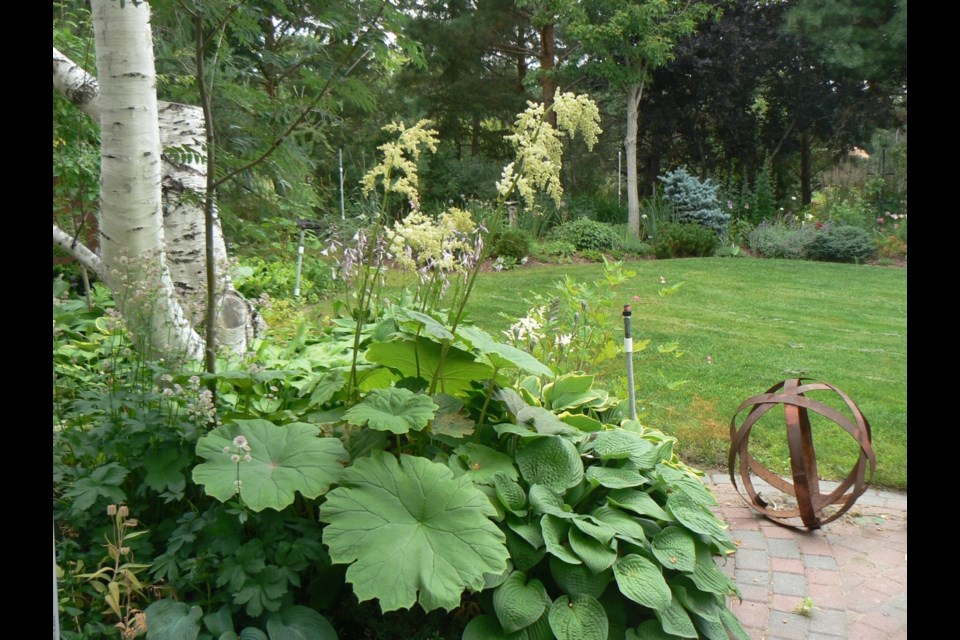If you have visited English gardens and marvelled at (and had your photo taken with) Gunnera, with its giant, up to four-foot wide rhubarb-like leaves, astilboides or shield-leaf (Astilboides tabularis, syn. Rodgersia tabularis) is a smaller, nearly as impressive, but much hardier version that your neighbours and friends can marvel at in your Prairie garden. Its leaves are enormous. Although unrelated, it is the perfect antidote for “Gunnera withdrawal” when garden tourists from the Prairies return home. I’ve grown it for over a decade in my rural Zone 3 Saskatchewan garden. It should be much more widely available.
A bold plant of great architectural value, it is nevertheless well-behaved, forming a slowly enlarging clump about 1 m (3 ft) in height. Its large, circular light green leaves are veined, lobed and up to 2 ft in diameter. The leaf stalks are in the centre of the leaf blade, giving them an umbrella-like appearance. Just hope for no hail or have a large umbrella handy. (While this occurred only once, it was devastating for both the plant and the gardener – both recovered.)
As the genus name, Astilboides, suggests, the panicles of tiny creamy white flowers, formed on 1.2 m (4 ft) stalks in early to mid-summer, resemble those of astilbe. It begins flowering at two or three years of age. The species name, tabularis, means table, also a reference to the size of the leaves, while one of the common names, shield-leaf, describes the shield-like appearance of the foliage. It is the only species within the genus Astilboides.
Native to the humid valleys and hillsides of northern and eastern China, Manchuria, and North Korea, it was first described in English in 1887. In its native habitat, it has long been used in the treatment of diabetes and grows in moist woodlands and near lakes and streams. It is much harder than what many publications suggest. And performs much better in the Prairies than further south!
Plant it in full or partial shade in humus-rich but well-drained soil and out of the wind. It demands even moisture but should not be waterlogged. Mulching is beneficial and highly recommended as the mulch retains soil moisture and reduces weeds. It is amazingly “low maintenance” for such a large and imposing perennial.
This is an excellent perennial for a shaded border or a woodland garden alongside ferns and hostas. It is easily propagated by division in early spring.
Sara Williams is the author of many books including Gardening Naturally with Hugh Skinner, Creating the Prairie Xeriscape, and with Bob Bors, Growing Fruit in Northern Gardens. She gives workshops on a wide range of gardening topics throughout the prairies.
— This column is provided courtesy of the Saskatchewan Perennial Society (SPS; saskperennial@hotmail.com). Check our website (www.saskperennial.ca) or Facebook page (www.facebook.com/saskperennial) for a list of upcoming gardening events.



